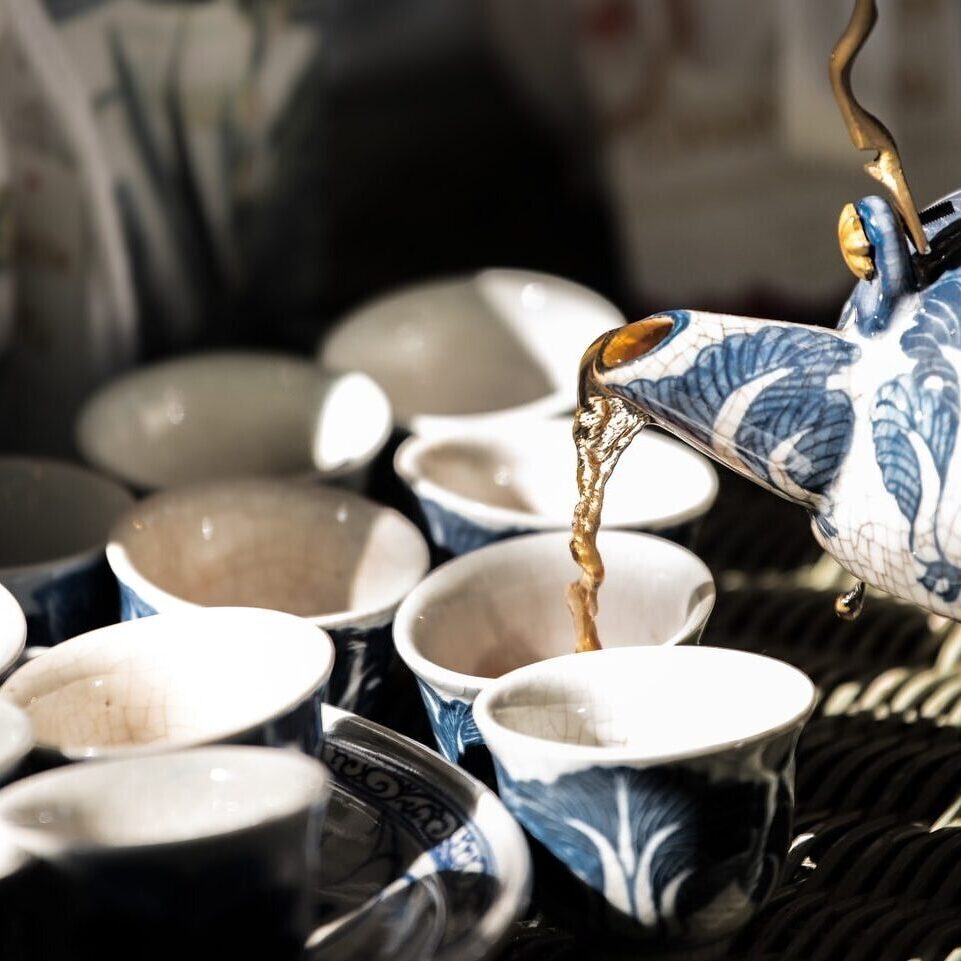Footbinding – the practice of binding the feet of women and girls existed in China for around 1,000 years.
While footbinding is still understood by many as a cultural standard of beauty undertaken purely for aesthetic purposes, there are other interesting theories about why it persisted for so many centuries and impacted so many parts of Chinese society.
What is footbinding?
Footbinding involved tightly bandaging the feet of very young girls; bending the four smaller toes underneath the foot towards the heel and securing them in place painfully and tightly.
Often, the delicate foot bones broke under the strong compression, permanently fixing a girls’ foot into a narrower shape. These tiny, bandaged feet were then wrapped into fashionable shoes and stockings if the wearer was wealthy or rudimentary shoes if the wearer was poor.
In general, women were expected to maintain the shape of their bound feet for the remainder of their lives, which naturally limited a woman’s ability to walk and often led to excruciating pain.
The origin of footbinding begins in the 10th century when a court dancer bound her feet to present to a Song dynasty (960-1279) emperor. Although thought to have emerged in elite society, research shows that footbinding was not only for the rich and socially mobile, but also practiced among rural and working-class groups down to the smallest and most remote village.
Why did footbinding persist?
There are multiple theories as to why footbinding persisted for so long in China, despite it being painful for women and restrictive to their mobility. A common assumption was that footbinding represented a cultural practice to make women more attractive or sexually appealing to a prospective husband.
The theory that footbinding was inherently erotic or aesthetic comes from the fact that up until recently, much of the historical information we can glean about the practice of footbinding comes from texts written by men. Images and accounts of footbinding are captured in the art and writings of mostly male elites over the centuries and portray women with bound feet as beautiful and sexually appealing.
For hundreds of years the majority of women and girls with bound feet were illiterate and therefore left no records. In recent decades, researchers began to interview women still living with bound feet to capture their voices and get a glimpse into a centuries-long tradition.
By hearing women’s voices and combining this with other historical information, researchers have come up with new interpretations about the practice of footbinding and what it can tell us about changing social and economic conditions in China’s history.
Upward mobility and a ‘good’ marriage
One theory is that footbinding was a way for many women and girls to secure an agreeable marriage. This was ideally one that allowed women to move up the social hierarchy or marry someone wealthier or with better social status. In 2012, researchers interviewed several elderly women with bound feet, asking about what their families had told them as children.
Many repeated that their mothers explained that footbinding leads to a ‘good’ marriage. Interestingly, the same researchers examined marriage records and historical data about the types of marriages women with bound feet had entered into and found that, on the whole, footbinding did not lead to marrying a man from a higher social class.
This suggests that the idea that footbinding was a way to secure a better social status was likely more cultural belief or aspiration than reality. However, as there are few written records detailing women’s experiences, there are many remaining questions about why cultural belief in footbinding as upward mobility persisted for so long.

Labour control?
Another recent theory about why footbinding remained a common practice centres around the idea of control of female labour among poorer and rural populations. Research from 2011 explored what kinds of work women and girls could participate in if their feet were bound. So what did they do?
Young girls with bound feet could not go out and play, run around and climb trees because it was too painful. Instead, little girls would help their mothers at home by contributing to small-scale textile production through activities like spinning and weaving. Domestic textiles was a way for any family, but particularly poorer ones, to supplement household income all year round. This was in contrast to agriculture which ebbed and flowed over the year.
This theory argues that footbinding, far from being a way for a woman to find a richer husband, or a simple beauty standard, was actually part of a complex economic system that relied on women and girls to work at home.
This female light labour resulted in goods to sell locally or via long-distance trade routes across China and beyond. Thus, the data suggests that the light labour of women and girls was integral to the family’s wealth and survival.
As a result of women’s often lucrative economic role at home, footbinding remained an important way to ensure women and girls continued to provide for their families.
Perhaps this links back to the cultural belief that women with bound feet secure better marriages, because bound feet signalled to a prospective husband that the woman was skilled in domestic textile production.

The changing economic landscape and the end of footbinding
Research shows that footbinding declined towards the end of the 19th century and the beginning of the 20th, with the practice effectively ending altogether by 1949. The decline of the practice coincided with an infrastructure boom in many regions of China.
Specifically, the construction of new and improved modes of transport such as trains and larger highways transported people and goods far quicker than had previously been possible. This period also welcomed new technological developments in the textile industry.
For example, in 1880, all yarn and fibre was spun in the home by women and girls. By 1936, around 75% of all fibre was spun in factories, effectively displacing a whole handicrafts industry in just three decades.
The combination of fast transport and industrial textile production meant that women and girls were no longer supplementing the family income by staying home spinning and weaving.
After the industrialisation of textile production and improvements in transportation, working in agriculture was now one of the main ways poorer families could earn an income. If women and girls had their feet bound, they could not work in the fields.
The decline of footbinding in China
Other factors such as colonisation and changing political and cultural norms as well as political upheaval contributed to the decline of footbinding in China. But it appears that industrialisation and technological innovations played a major role in its decline in many areas. By the time Mao Zedong assumed power in 1949, the practice was very uncommon.

What does the history of footbinding tell us?
The history of footbinding is a fascinating look into gender relations, economy and social change and how these are all intricately interrelated. It is a window into the flow of effects of technological disruption especially as it relates to culture and tradition.
While there is no suggestion that footbinding originated as a way to control the labour of women and girls, its ongoing practice appears to have led to a distinct division of the types of labour women and men participated in.
For almost a thousand years this economic system perpetuated, but with the introduction of new technologies was made obsolete.
Technological disruption has occurred time and time again throughout history and continues to impact our lives. In the case of the decline of footbinding, women regained their mobility and no longer had to live with debilitating pain. The impacts on gender relations and division of labour appear to be much more profound.





